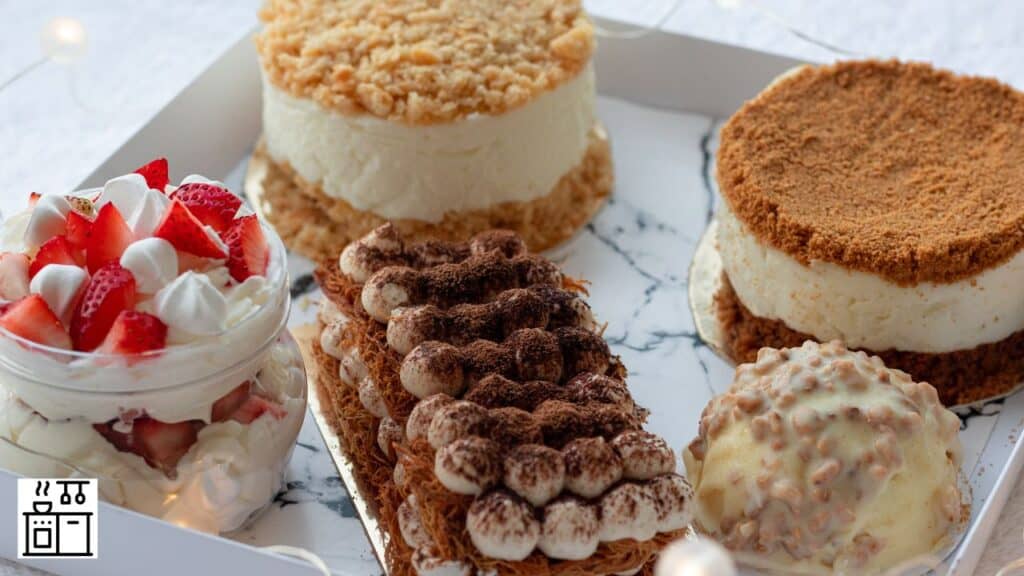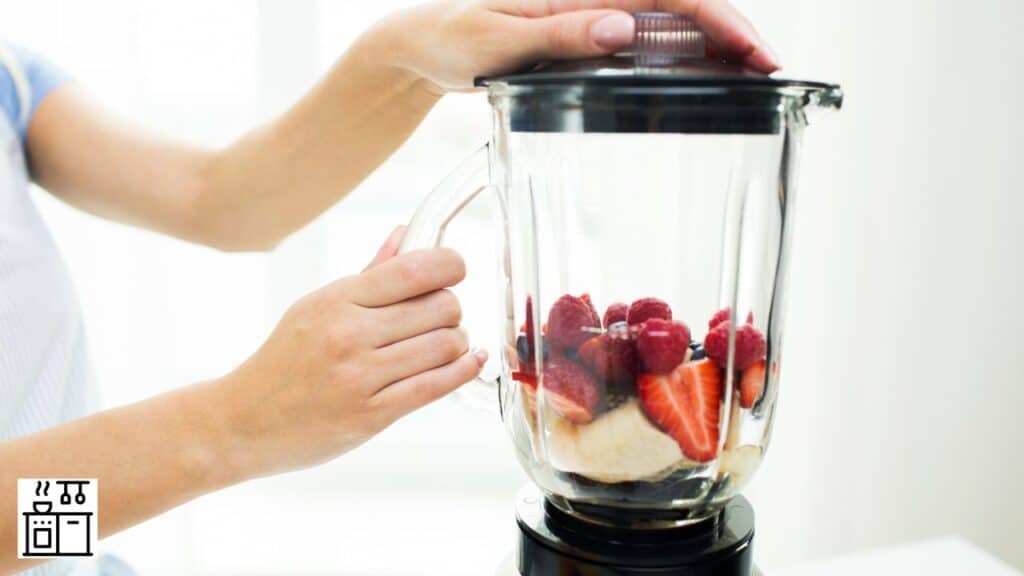Most of us use blenders to make smoothies and shakes. But this is not all that you can do with these appliances.
You can also puree ingredients for soups, sauces, baby food, desserts, and nut butter in a blender. Some other uses include emulsifying ingredients for mayonnaise and salad dressings, apart from creating cocktails, juices, mocktails, and nut milk.
You can even use a blender for making pancake and muffin batter or to separate butter from cream. Blenders with special blades can be used for powdering sugar or crushing ingredients for flour.
Let’s look at each of these uses in closer detail.
1. Smoothies
Smoothie drinkers will always have a trusted blender to churn out their favorite smoothies.
With a powerful smoothie, you can simply add all the ingredients into the blender jar and run it till the ingredients are properly mixed.
Common ingredients for smoothies include fruits, vegetables, protein powder, green leafy vegetables, ice, and nut butter.
You can add all the ingredients at once and blend them into a uniform, smooth consistency. The blades are so powerful that they can even crush ice and blend it with the mixture.
2. Milkshakes
Another popular use of blenders is to make milkshakes. Again, the process remains the same. Simply add all the ingredients with the milk and ice, if desired, into the jar.
When you run the blender, it will crush and blend all the ingredients with milk to create a smooth and delicious milkshake.
You can also make creamy coffee shakes or cappuccino in a blender by adjusting the ingredients.
3. Soups
Both hand blenders and jar blenders are great for making soups.
To make soups using these devices, you can cook the different ingredients on the stove and use the blender to transform them into a smooth mixture.
In the case of an immersion hand blender, you can run the blender through the stock pot or pan containing the ingredients to puree them.
When using a countertop blender, you will have to transfer the cooked mixture to the blender to puree it.
However, when using a countertop blender, you should be careful about pureeing a very hot mixture.
Don’t overfill the blender jar, and puree the ingredients at a slow speed to prevent splattering.
4. Sauces
A blender can make sauces from vegetables and fruits. Some of the best sauces to make in a blender are Hollandaise, Marinara, Apple sauce, Hummus, and Cranberry sauce.
When adding fresh fruits and vegetables for sauces, you will not need much additional liquid.
It’s because most fresh ingredients have enough moisture to create the right texture for a sauce. If it ends up being too runny, you can add a few spoons of cornstarch for thickening.
5. Baby Food
A blender makes it easy for parents to feed babies healthy, homemade nutritious food. You can blend both cooked and raw ingredients for this purpose.
Some of the commonly used ingredients for baby food that you can prepare in a blender are carrots, bananas, papayas, rice, cooked lentils, and avocado.
The main benefit of using a blender for this purpose is that you can prepare a big batch of food at once and put it away for multiple meals.
6. Desserts

Apart from milkshakes and smoothies, you can make many non-liquid desserts in a blender.
Some examples are blender cupcakes with frosting, flavored yogurt, pies, brownies, and more. Most of these desserts will have some amount of cooking followed by the blending process.
But the main benefit of using a blender is to reduce the effort of whipping, kneading, and mixing ingredients.
You can complete this part of the dessert in mere minutes and get on with the rest of the cooking or assembling process.
7. Nut Butter
Homemade nut butter is often healthier than the storebought version because you can control exactly what goes into them.
A blender makes it easy to put together large batches of nut butter using good ingredients at home. Some options are almond butter, peanut butter, and honey cashew butter.
The process remains the same for all the recipes. Add the ingredients, like the nuts, along with a liquid medium, like oil or water, into the blender.
Blend it for several minutes till the nuts are completely pulverized and mixed with the liquid. As you continue turning the blender, the ingredients will come together and thicken.
However, give gaps between pulses to allow the motor to rest to prevent overheating. Scrape the sides of the blender jar between pulses to move the nuts to the base.
8. Emulsifying Ingredients
The preparation of salad dressings and mayonnaise involves the emulsification of ingredients. A blender makes this possible.
You can place the base ingredients, like egg, in the jar and run the blender.
Emulsifying agents like oil can be gradually poured in through the hole in the lid and gently mixed to achieve the desired consistency.
9. Cocktails, Juices, and Mocktails
A blender makes it possible to mix various ingredients to make delicious cocktails, juices, and mocktails.
By adding both liquid and solid ingredients, you can blend them well to create a uniform liquid consistency.
Most blender jars also have a spout that makes pouring out the liquid easy into the glassware used for serving the drink.
10. Nut Milk
Oat milk, almond milk, cashew milk, soy milk, and more can easily be extracted from nuts and seeds using a blender.
Just add the ingredients into the blender jar with enough liquid, like water, and blend it. You can then use a strainer to separate the liquid from the solid component.
You can also use a blender to extract coconut milk from freshly grated coconut using the same process.
You can refrigerate the excess liquid beyond what you need for immediate use and put it aside for later.
Blenders can also separate butter from cream. Blenders with special blades can even powder sugar and crush ingredients to make flour.
11. Batter for Pancakes, Muffins, and Cakes
You can use a blender to put together the batter for recipes like pancakes, muffins, and cakes. However, the batter must be moist and not too thick.
Start by blending the liquid ingredients first, like eggs, oil, milk, or buttermilk. Gradually add the solid ingredients like flour and baking powder so that the blades don’t overheat.
The ready batter can be directly used for cooking or baking.
12. Separating Butter from Cream
Some blenders have a separate attachment or blade to separate butter from cream.
In this case, you can engage this attachment at the base of the blender jar before pouring cream into the jar.
Run the blender for a few minutes until the butter separates from the liquid. You can strain the butter out and use the remaining buttermilk for other recipes.
If your blender doesn’t have this attachment, you can still use it to separate butter. In this case, add water to the cream before turning the blender on.
Pulse it for a few seconds and stop. Repeat this process several times till the butter appears on top of the cream.
You can use a strainer to separate the butter from the liquid.

